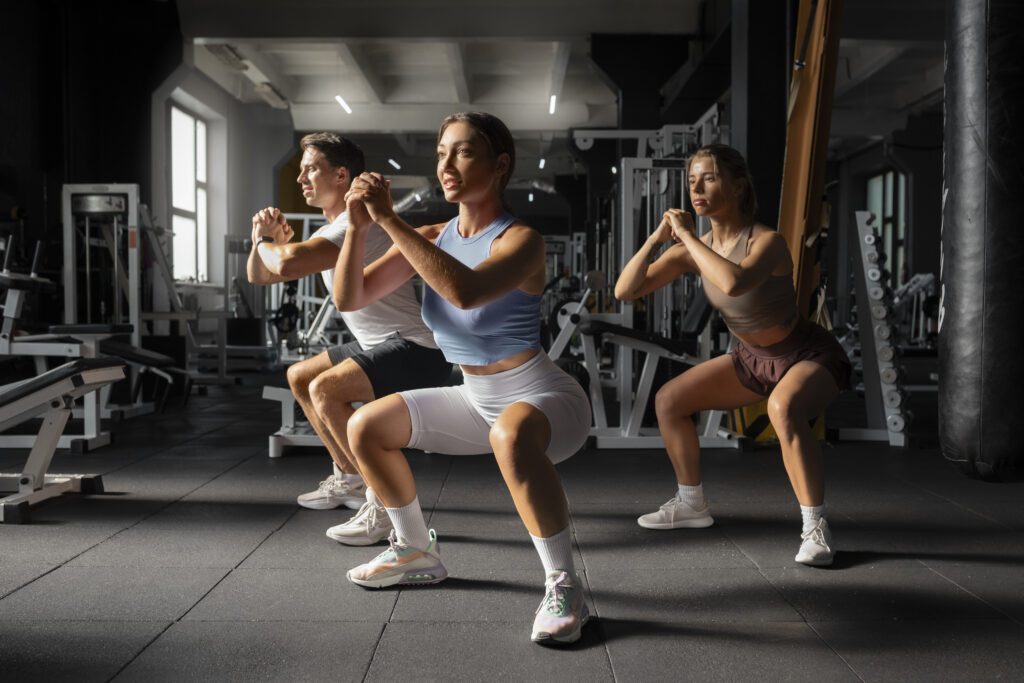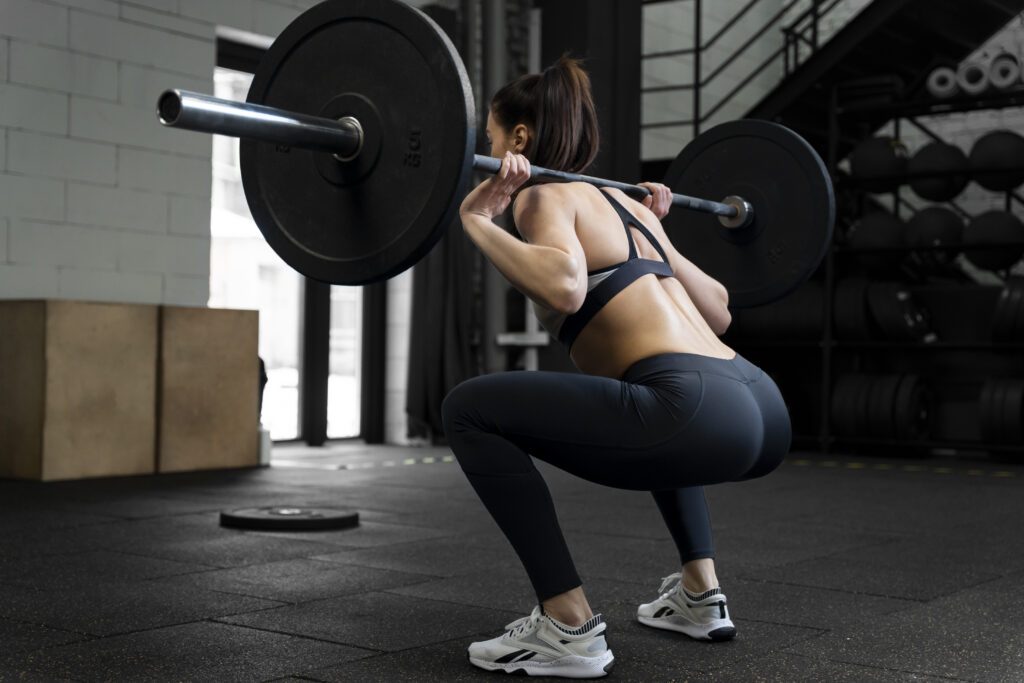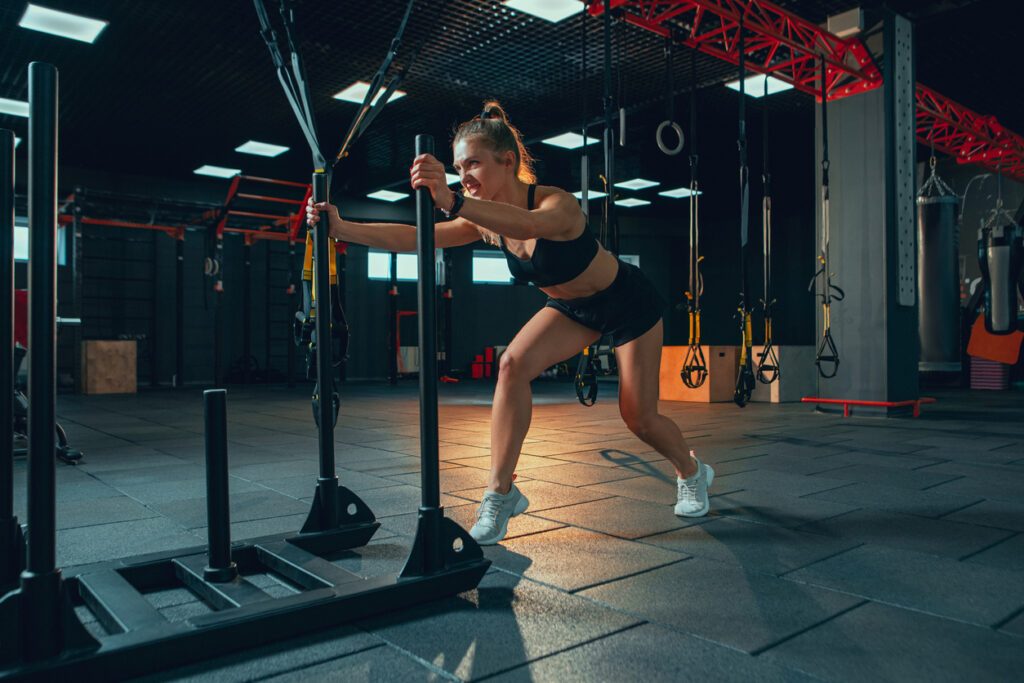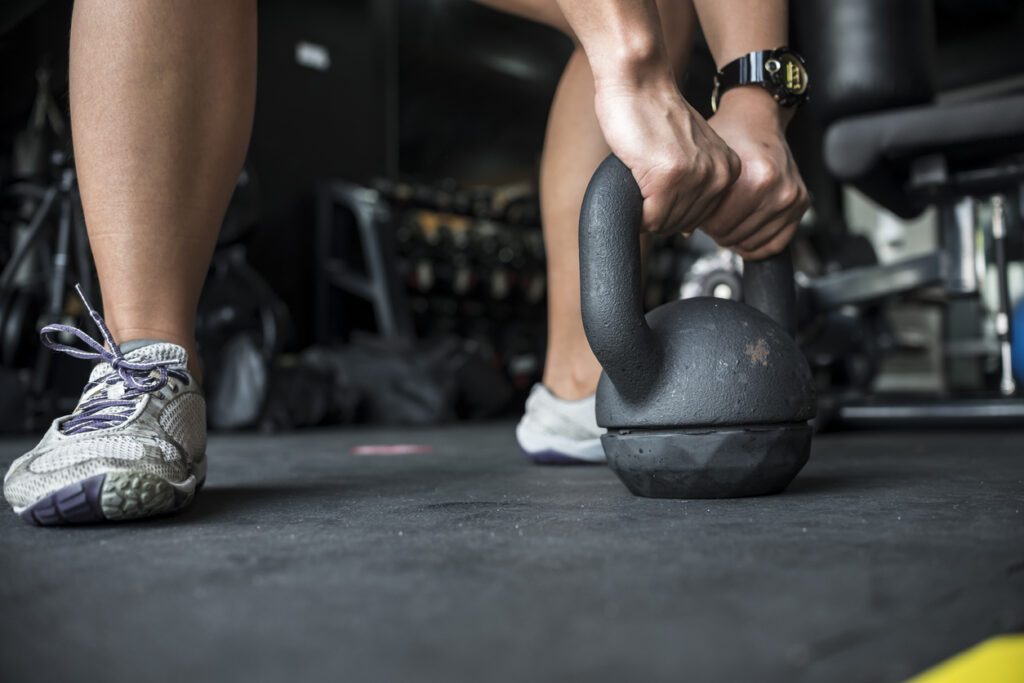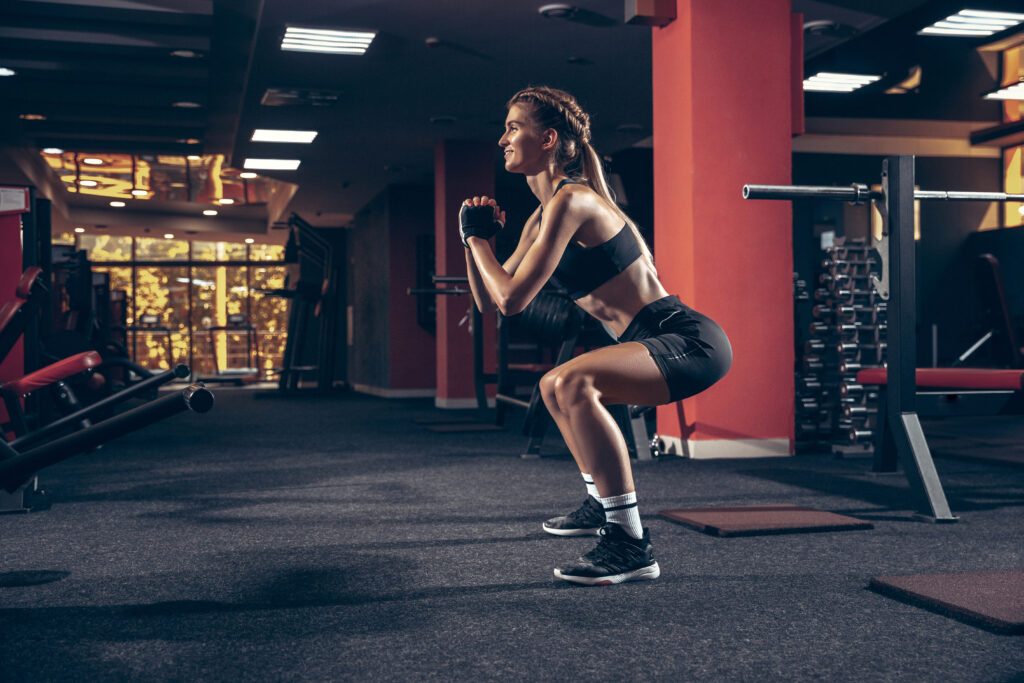
Summary
Welcome / Welcome / Tips for getting started / The Complete Guide to How to Do a Squat
The Complete Guide to How to Do a Squat
Want to know how to do a squat correctly? This article guides you step by step to master this essential bodybuilding technique. Discover the benefits and the muscles used to optimize your workouts.
Comprendre l’importance du squat
Le squat est plus qu’un simple exercice ; il améliore la mobilité, l’équilibre et la posture pendant votre sport. Nous vous expliquons les variantes et les astuces pour progresser efficacement. Que vous soyez débutant ou avancé, vous trouverez des conseils adaptés. Alors, ne vous posez plus la question de savoir comment faire des squats.
Benefits of squatting for muscle development and strength
The squat is a fundamental exercise in bodybuilding. It helps you develop considerable strength and build impressive muscle mass in your lower body. By regularly including squats in your routine, you effectively stimulate your muscles, promoting increased growth and power. It's a comprehensive exercise that works multiple muscle groups simultaneously, making each repetition incredibly productive.
Muscles sollicités lors d’un squat
Le squat sollicite principalement les quadriceps, situés à l’avant des cuisses, les ischio-jambiers à l’arrière des cuisses, et les fessiers. Mais ce n’est pas tout ! Il engage également les muscles du bas du dos, les abdominaux et même les mollets. En d’autres termes, le squat est un mouvement polyarticulaire qui mobilise l’ensemble du corps, garantissant un entraînement complet et équilibré.
Functional benefits of squatting
Beyond muscle and strength gains, the squat offers significant functional benefits. It improves the hip mobility et des chevilles, renforce l’équilibre et corrige la posture. En effectuant des squats, vous travaillez à stabiliser votre corps, ce qui réduit le risque de blessures et améliore vos performances dans d’autres activités physiques. En somme, le squat n’est pas seulement un exercice de musculation, mais un mouvement fondamental pour une vie active et en bonne santé.
Execute the squat technique correctly
Preparation
Before you begin, it is crucial to prepare properly to perform a squat safely and effectively. Here are some key points to consider:
Choosing the right shoes (flat and stable sole)
Le choix des chaussures est déterminant. Optez pour des chaussures à semelle plate et stable. Elles offrent une meilleure adhérence au sol et un soutien optimal pour vos pieds. Une semelle plate permet de répartir uniformément le poids, garantissant une stabilité maximale pendant l’exercice.
Possibly use a weight belt
If you lift heavy weights, a weight belt can be helpful. It helps stabilize the trunk and protect the lower back. However, be careful not to overdo it to allow your stabilizing muscles to strengthen naturally.
Correctly position the bar on the trapezius
Place the bar correctly on your trapezius, slightly above the shoulder blades. This position helps maintain good balance and reduces stress on your shoulders and back. Make sure the bar is centered to avoid any imbalance.
Execution
To succeed in a squat, technique is essential. Here are the movements to follow:
- Feet hip-width apart : Positionnez vos pieds à la largeur de vos hanches, avec les pointes légèrement tournées vers l’extérieur. Cela assure une bonne base de support.
- Dos droit, regard vers l’avant : Keep your back straight and engage your abs. Fix a straight point in front of you to keep your head in a neutral position.
- Descend while keeping the weight on your heels : En amorçant la descente, poussez vos hanches vers l’arrière tout en gardant le poids sur vos talons. Cela aide à maintenir l’équilibre et à engager correctement les muscles.
- Descendre jusqu’aux cuisses parallèles au sol (ou plus bas pour un « full squat ») : Continuez à descendre jusqu’à ce que vos jambes soient parallèles au sol. Pour un « full squat », descendez plus bas tout en maintenant une bonne forme.
- Exhale while going up : As you come back up, exhale and push through your heels. Straighten your hips and knees simultaneously to return to the starting position.
En suivant ces étapes, vous pouvez exécuter un squat correctement, minimisant le risque de blessure et maximisant les bénéfices de l’exercice. N’oubliez pas que la technique prime sur la charge. Travaillez d’abord votre forme avant d’ajouter du poids.
Variations of the squat
Traditional squat
How to make it
The back squat, or traditional squat, is performed with a bar placed on the trapezius. Here's how to do it correctly:
- Position yourself under the bar : Place the bar on your trapezius, feet hip-width apart.
- Grip the bar firmly : Hands slightly wider than shoulders.
- Go down keeping your back straight : Poussez les hanches vers l’arrière, genoux fléchis, jusqu’à ce que les cuisses soient parallèles au sol.
- Come back up by pushing on your heels : Exhale while returning to the initial position.
Mainly used muscles
The back squat mainly uses the quadriceps, glutes and hamstrings. The back muscles and abdominals also play an important stabilizing role.
Squat with barbell in front
How to make it
Le front squat se fait avec la barre placée à l’avant des épaules. Voici les étapes à suivre :
- Place the bar on the front of the shoulders : Les coudes pointent vers l’avant, bras parallèles au sol.
- Grip the bar lightly : Hands shoulder-width apart.
- Go down while keeping your trunk straight : Poussez les hanches vers l’arrière, genoux fléchis, jusqu’à ce que les cuisses soient parallèles au sol.
- Come back up by pushing on your heels : Exhale while returning to the initial position.
Squat without load
How to run it
L’air squat est une variante sans charge, idéale pour les débutants ou comme échauffement. Voici comment l’exécuter :
- Position feet hip-width apart : Pointes légèrement tournées vers l’extérieur.
- Go down keeping your back straight : Poussez les hanches vers l’arrière, genoux fléchis, jusqu’à ce que les cuisses soient parallèles au sol.
- Come back up by pushing on your heels : Exhale while returning to the initial position.
Dumbbell squat
How to make it
The barbell squat is a great alternative to the back squat. Here's how to do it:
- Hold a dumbbell in each hand : Arms alongside the body, feet hip-width apart.
- Go down keeping your back straight : Poussez les hanches vers l’arrière, genoux fléchis, jusqu’à ce que les cuisses soient parallèles au sol.
- Come back up by pushing on your heels : Exhale while returning to the initial position.
Each variation of the squat offers unique benefits and allows you to target the muscles differently. By varying your squats, you can diversify your training and maximize your muscle and strength gains.
Progress with the squat
Choose the right load
Progressing with the squat requires a methodical and gradual approach. Here are some tips for choosing the right load and improving your technique:
Start without weight to work on technique
Avant de charger la barre, il est essentiel de maîtriser la technique du squat. Commencez sans charge pour vous familiariser avec le mouvement. Concentrez-vous sur la posture, l’équilibre et l’amplitude du mouvement. Un bon squat sans charge est le fondement de la progression future.
Gradually increase loads and repetitions
Une fois que vous maîtrisez la technique, il est temps d’ajouter du poids progressivement. Voici comment procéder :
- Add light weights : Increase the load in small increments to avoid injury.
- Increase the repetitions : Une fois à l’aise avec une charge, augmentez le nombre de répétitions pour améliorer l’endurance musculaire.
- Vary the series : Intégrez des séries plus courtes avec des charges plus lourdes pour augmenter la force, et des séries plus longues avec des charges plus légères pour l’endurance.
Monitoring and adjusting progress
To maximize gains, track your performance and adjust your program regularly:
- Tenez un journal d’entraînement : Note the loads, repetitions and sets performed.
- Evaluate your technique : Film your squats to spot and correct mistakes.
- Consult a coach : If possible, seek the advice of a coach for personalized advice.
Adopt adequate nutrition and recovery
La progression avec le squat ne dépend pas uniquement de l’entraînement. L’alimentation et la récupération jouent également un rôle crucial :
- Food : Consume enough protein for muscle rebuilding and carbohydrates for energy.
- Recovery : Give your muscles time to recover between sessions. Sleep and rest days are essential to avoid overtraining and injury.
By following these tips, you will be able to progress effectively with the squat, safely, while maximizing your gains in strength and muscle mass.
Specific benefits of squatting
Weightloss
The squat is an exceptional exercise for weight loss. Here's why and how it helps burn calories:
Complete exercise burning lots of calories
Le squat est un mouvement polyarticulaire, ce qui signifie qu’il sollicite plusieurs groupes musculaires simultanément. En recrutant des muscles comme les quadriceps, les fessiers, et les ischio-jambiers, le squat augmente significativement la dépense énergétique. Plus vous engagez de muscles, plus vous brûlez de calories, ce qui aide à la weightloss.
Example of a squat circuit to promote calorie expenditure
Pour maximiser la dépense calorique, intégrez les squats dans un circuit d’entraînement :
- Squat with jump : 15 repetitions
- Burpees : 10 repetitions
- Squat with dumbbells : 12 repetitions
- Mountain climbers : 30 seconds
Repeat this circuit 3 to 5 times with a short break between each set. This type of routine increases your heart rate and optimizes calorie burning.
Glute development
Squats are particularly effective for developing the glutes. Here's how to use this exercise to maximize results:
Full amplitude to target the glutes
Pour cibler efficacement les fessiers, il est crucial de descendre en amplitude complète, c’est-à-dire jusqu’à ce que les cuisses soient au moins parallèles au sol. Une plus grande amplitude augmente l’activation des muscles fessiers.
Tips for a Deep and Effective Squat
- Hip warm-up : Before you begin, perform hip mobility exercises to improve your range of motion.
- Correct posture : Gardez le dos droit et les abdominaux engagés pour éviter les blessures et maximiser l’activation musculaire.
- Use of suitable loads : Choose a load that you can safely control while reaching the desired depth.
By following these tips, you can optimize your glute development and get the most out of your squat sessions.
Conclusion
The squat is a fundamental exercise for developing strength and muscle mass. By mastering the different variations, you optimize your training and your results. Following proper progression and adopting correct technique are essential to avoiding injury.
Les squats sollicitent de nombreux muscles et offrent des bénéfices spécifiques tels que la perte de poids et le développement des fessiers. Ils améliorent également la mobilité, l’équilibre et la posture. Adaptez votre entraînement selon vos objectifs pour maximiser les gains.
Work your glutes at DRIP
Push your limits and strengthen your body with DRIP! Participate in intense and effective 50-minute sessions.
Chez DRIP, vivez l’action à travers 7 ateliers dynamiques en 3 séries, chaque seconde étant un nouveau défi. Nos entraîneurs passionnés vous motiveront avec des playlists entraînantes. Adapté à tous les niveaux, DRIP est l’endroit parfait pour travailler vos cuisses de manière optimale. Vous allez adorer nous détester ! ❤️🔥
Share
Tagged
Read also
follow us
on instagram
To follow all our news,
take advantage of our tutorials and participate
in our many competitions.
BREAKING NEWS!
Receive our newsletter.
